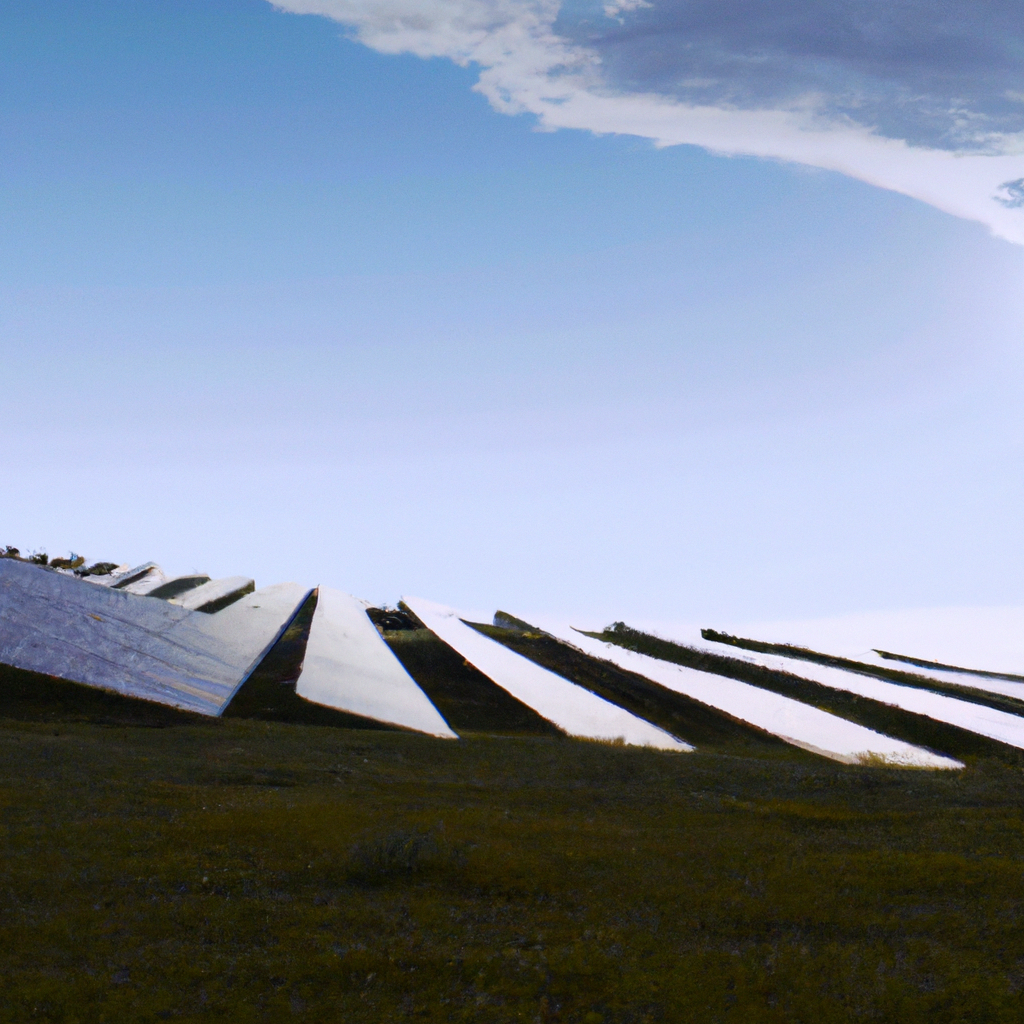A solar panel is a device that converts sunlight into electricity. Solar panels are a renewable energy source and are becoming increasingly popular as people look for ways to reduce their carbon footprint. In this article, we will explore how solar panels work to convert sunlight into electricity.
How do solar panels work?

Solar panels are made up of photovoltaic cells. These cells are made from materials such as silicon, which is a semiconductor. When sunlight hits the semiconductor material, it causes the electrons to become excited and move around. This movement of electrons creates an electrical current.
The photovoltaic cells are arranged in a grid pattern on the solar panel. They are connected together by small wires that allow the electrons to flow from one cell to the next. The electrical current created by the cells is then sent to an inverter, which converts the current into usable electricity.
The process of converting sunlight into electricity
The process of converting sunlight into electricity involves several steps. Let’s take a closer look at each step in detail.
Step 1: Absorption of sunlight
The first step is the absorption of sunlight by the solar panel. The solar panel is made up of layers of materials that are designed to absorb sunlight. The top layer is made of a transparent material that allows sunlight to pass through. The layer beneath this is made up of photovoltaic cells. When sunlight hits the cells, it causes the electrons to move around and create an electrical current.
Step 2: Creation of an electrical current
When sunlight hits the photovoltaic cells, it causes the electrons to become excited and move around. This movement of electrons creates an electrical current. The electrical current created by the cells is direct current (DC) electricity.
Step 3: Conversion of direct current (DC) electricity to alternating current (AC)
Most homes and businesses use alternating current (AC) electricity. Therefore, the direct current (DC) electricity created by the solar panel must be converted into alternating current (AC) electricity. This is done by an inverter, which is connected to the solar panel system. The inverter converts the DC electricity into AC electricity, which can be used to power homes and businesses.
Step 4: Use of electricity
The AC electricity created by the solar panel system can be used to power homes and businesses. The electricity can be used to power lights, appliances, and electronic devices. Any excess electricity that is not used by the home or business can be sent back to the grid for others to use.
Advantages of solar panels
There are several advantages to using solar panels to convert sunlight into electricity. Let’s take a look at some of these advantages.
Renewable energy source
Solar panels are a renewable energy source. They use sunlight, which is a renewable resource, to create electricity. This means that solar panels do not contribute to the depletion of natural resources, such as fossil fuels.
Clean energy source
Solar panels are a clean energy source. They do not produce any emissions, which means that they do not contribute to air pollution. This makes them a great choice for those who are concerned about environmental issues.
Reduced energy costs
Using solar panels to generate electricity can help to reduce energy costs. Once the solar panel system is installed, it can generate electricity for many years without any additional costs. This can help to reduce the amount of money that is spent on electricity each month.
Conclusion
Solar panels are a great way to convert sunlight into electricity. They are a renewable energy source that is clean and can help to reduce energy costs. By understanding how solar panels work, we can see that they are a great choice for those who are looking for ways to reduce their carbon footprint and save money on electricity. With the continued development of solar technology, it is likely that solar panels will become even more efficient and affordable in the future.






